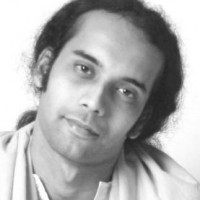A few months back I faced a peculiar question from a participant of my Yoga workshop. She mentioned that her “practice” was not improving. She has been a yoga enthusiast and a teacher for more than 10 years and when I asked her what was it that she meant by practice, she said “her head stand was not good enough”.
The famous yoga guru, Shri. Pattabhi Jois, once said “practice, practice and everything is coming.” This single beautiful sentence has probably launched a thousand yoga studios across the world. Probably the word “practice” has been literally translated from the Sanskrit word “sadhana ” or “abhyasa”.
I wonder, are we reading the word “practice” in the right spirit? Do we all need to widen our definition of “practice” in the context of Yoga ?
Yoga is a science of gradual evolution towards our True nature of loving, empowered and energized Being. Following the methods of Yoga, in a wholesome sense over a period of time under the guidance of a teacher and being open to the grace is called “Yoga Sadhana”.
The Asana aspect of Hatha Yoga seems to be dominating the field of sadhana in recent years. People derive a great sense of joy and pride mastering asanas. It is very easy to get caught up refining the asanas for years and conveniently ignoring the field of psychological exploration.
As we start practicing asanas our self awareness increases. We start understanding the ways of our body and it’s sensations and signals. This very awareness, if encouraged, starts percolating to the zones of mind. The practice of asana is a doorway to the expanse of the mind. Thus, if the asanas are practiced correctly with awareness and under an able guide, they would definitely loosen up the dense subconscious tendencies of our mind, which will result in some deeper psychological issues to surface. This is when an honest and sincere review of the issues that come up should be conducted. This is a part of the process of refinement (sadhana) according to Hatha Yoga.
This refinement or transformation happens gradually and subtly. If the Yogi is involved “unconsciously” or mechanically in the sadhana there is a danger of getting “stuck”, leading to frustration, competition, over compensation and in the end dropping out of the path.
In fact somewhere deep down within we know there are skeletons in our mental closet and that’s why for years we “entertain” ourselves with the asana practice in order to avoid facing the fears within. It is easy to meander on the surface of yogic exploration by trying to get into that “scorpion” and conveniently avoid facing the “sting of limitedness”. This is where we need to gather some faith, motivation and courage to face what lies beneath. This is a major challenge for many yoga enthusiasts.
Here are some tips to help us avoid this trap
The Yoga sadhana has the inherent power to gradually take you from feeling of limitedness of body-mind complex to the final stage of identification with the True Self. That is why it is of at most importance to have a wider view of sadhana, wider in the sense of the sadhana being the means to liberation of body-mind complex and not just muscular stretches.
The Yogas are vast and encompass a variety of methods to suit variety of temperaments. If you know what kind of temperament you are then it’s better to stick to the Yoga conducive to your temperament. If you are confused, talk to your teacher and explore the variety of ways of yogic self – transformation.
Be patient, because on spiritual path it is not about how fast you get there.
Have faith in Yoga, the Guru, and your own self effort.
Since the asana part of yoga is practiced also in social set ups like yoga studios etc, it is natural that the mind would start competing. Therefore it is necessary to remember that yoga is the process of “individual” refinement. So just keep your eyes on your own sadhana and do not get confused or distracted by others sadhana.
It would not be wrong on my part if I said that Sadhana is a process of trade. Be sure to give something to receive something, this is how energy is transformed and karmas are balanced. That’s why the process of sadhana has also been called as a Yajna or a sacrifice. The Yogi voluntarily offers his/her negatives into the fire (tapas) of his self effort and this is balanced by the reward of feeling and being liberated.
Finally, look at Sadhana, self exploration with joy and a sense of wonderment. It is beautiful how life brings us exactly the things that we need to learn. Till we learn, the experiences keep coming again and again. This is the basis of the Divine plan for us. In our myopia we just don’t see it. Every hardship is nothing but freedom in disguise. If we view life in this way, life in itself becomes a Sadhana.

 Share on bsky
Share on bsky






Read 14 comments and reply